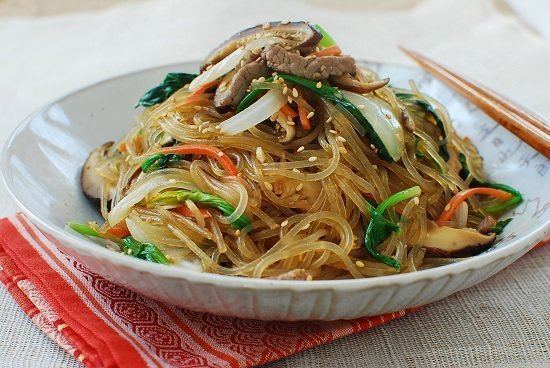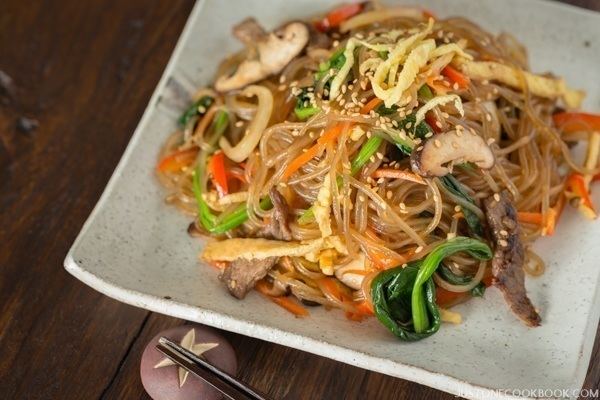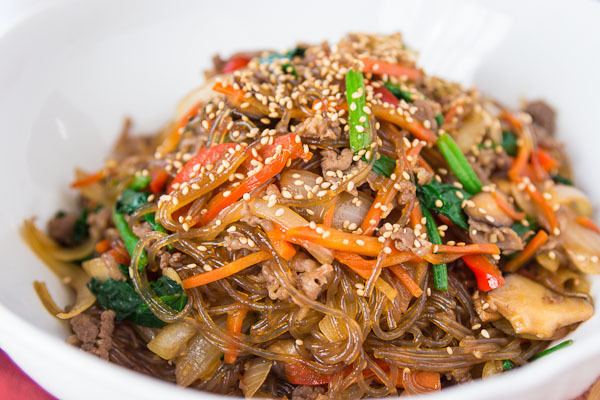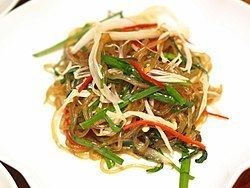Type Korean noodles Place of origin Korea | Serving temperature Hot or cold | |
 | ||
Alternative names Chop chae
Chap chae
Jabchae
Chapchae Main ingredients Cellophane noodles, sesame oil, vegetables (carrots, onion, spinach, mushrooms) Similar Bulgogi, Bibimbap, Jeon, Cellophane noodles, Kimchi | ||
Japchae glass noodles stir fried with vegetables
Japchae, jabchae, chapchae, chop chae, or chap chae (Korean: 잡채) is a Korean dish made from sweet potato noodles (called dangmyeon, Korean: 당면), stir fried in sesame oil with vegetables (typically thinly sliced carrots, onion, spinach, and mushrooms), sometimes served with beef, and flavoured with soy sauce, and sweetened with sugar. It is usually served garnished with sesame seeds and slivers of chili. It may be served hot or cold.
Contents
- Japchae glass noodles stir fried with vegetables
- Etymology
- History
- Varieties without noodles
- Varieties served in Korean royal court cuisine
- References

This dish is served at Korean parties and special occasions, with seasonal vegetables added.
Japchae is most commonly served as a side dish, though it may be a main dish. It is sometimes served on a bed of rice; with rice it is known as japchae-bap (잡채밥), bap (밥) meaning "rice."

Etymology

The name japchae comprises the two hanja words jap (hangul: 잡, hanja: 雜, literally "mixed and stirred") and chae (hangul: 채, hanja: 菜, literally "vegetables"). Therefore, japchae literally means "a mixture of vegetables."
History

Japchae was first made in the early 17th century, when the Joseon Dynasty was reigning in the Korean peninsula. When King Gwanghaegun hosted a big party at his palace, one of his lieges, Yi Chung, created this dish to please the king’s palate. The king liked it so much that he rewarded his liege by promoting him to the position of hojo panseo (hangul: 호조판서, hanja: 戶曹判書, equivalent to the Secretary of the Treasury). At the time, japchae was made without noodles, and with thinly shredded vegetables and mushrooms, such as cucumber, mu, and pyogo mushroom. Since the early 20th century, dangmyeon (cellophane noodles made from sweet potato starch) has become an integral and primary ingredient of this variety of japchae.
Varieties without noodles

Varieties served in Korean royal court cuisine

